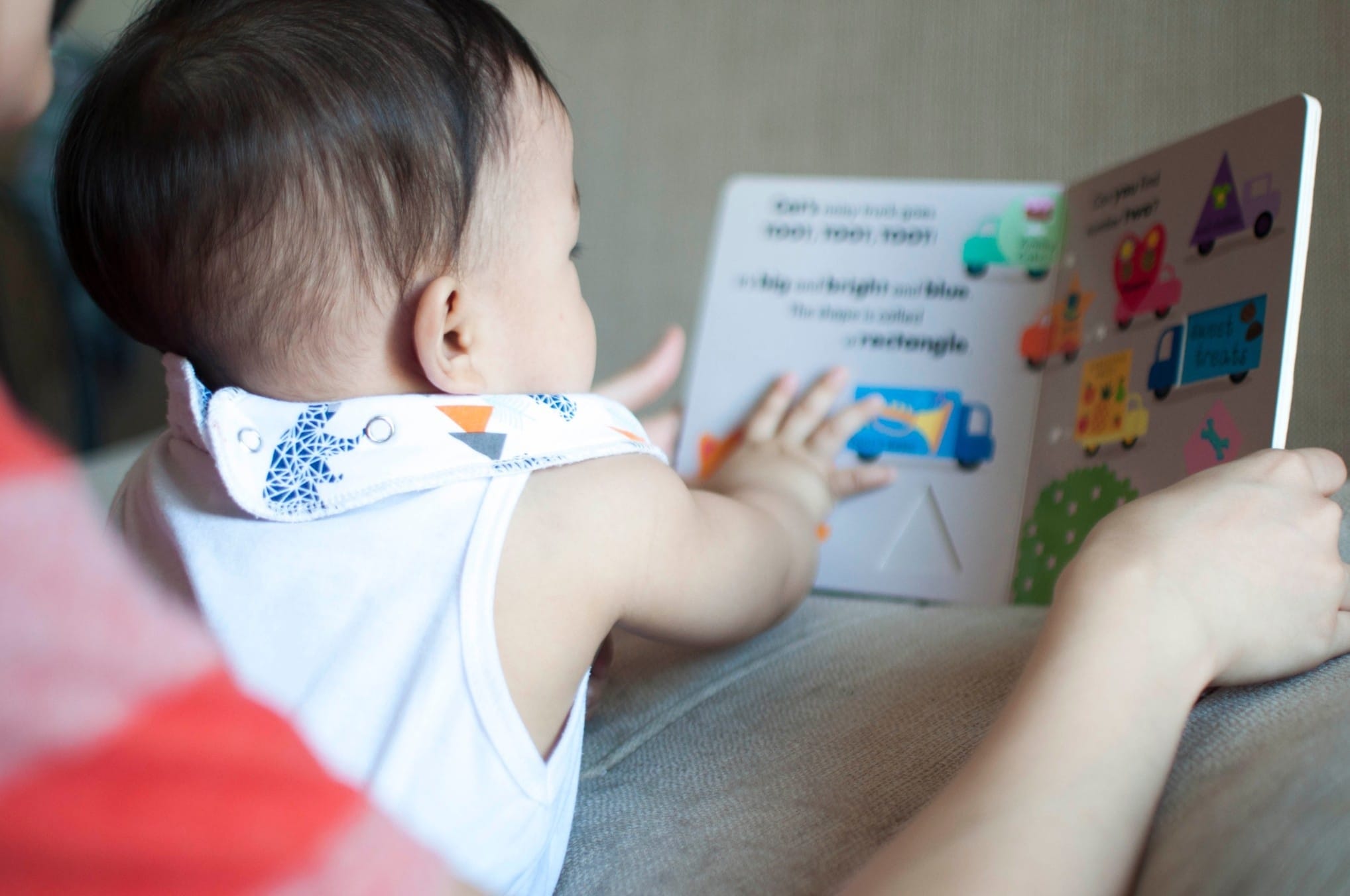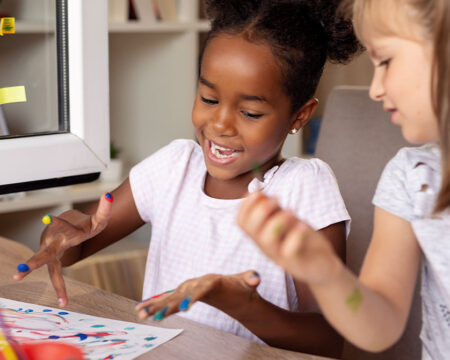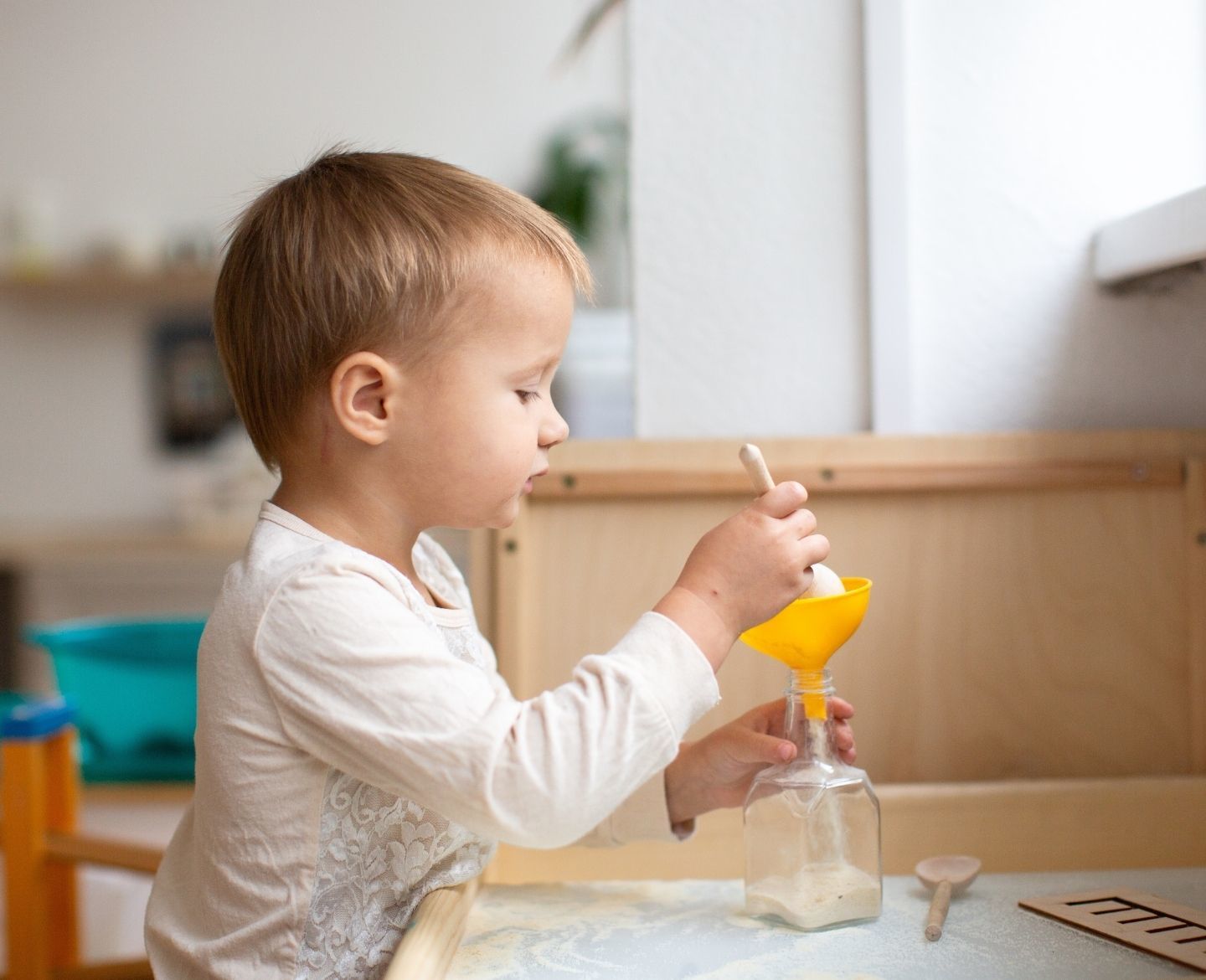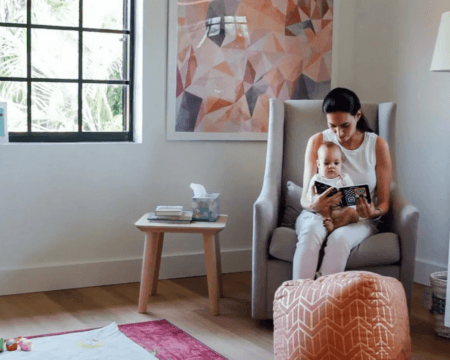Bored of storytime? 5 ways to make reading to your baby more interactive
Break out of that board book rut and make storytime more engaging—for you and your baby.

We’ve all been there: It’s storytime, and you’re about to pull out another book that you’ve read to your child so many times (sigh) that you can probably recite the whole book from memory without even opening it. Even though you know reading and re-reading helps your little one learn (and the younger you start reading to your baby, the better), sometimes it’s hard to bring the energy. How do you make storytime exciting yet again?
Here are five ways to make reading to your baby engaging and fun—for both of you:
1. Give choices.
Every morning, I pull out five or six different books to read at some point during the day and stack them in a pile. When it comes time for us to actually read one, I put my 5-month-old baby on my lap, and then pull out two books and put them directly in front of my her.
When I ask which one she would like to read, she will usually reach her hand out and touch one. We’ve done this so many times, she’s learning how to select. If she doesn’t touch one, I go to the one that her gaze is on. Sometimes I will switch them around (just so that I can make sure I’ve picked the one she’s really focused on and not just going for what’s at her right hand side), and then read the one her gaze stays on the most.
Giving your baby a choice helps convey the message that she’s an active part of the reading and not just listening in. It also allows her to use her sense of touch and start learning about cause and consequence (similar to banging on a drum or using a shaker). It may even encourage grasping as your baby’s fine motor skills develop.
2. Let your baby turn the pages.
Babies need to engage all their senses when learning. How many times have you seen your little one play “this goes in my mouth”? By allowing your baby to touch the book and turn the pages, you are helping them to learn what we often call “pre-literacy skills” that they will develop further in preschool and pre-k. By turning the pages on their own, they are not only building their grasp, but also learning valuable skills, like which direction books open and that English print goes from left to right.
3. Add songs & movement.
Studies have shown that music helps kids learn. Adding songs while you read to your baby keeps them engaged, and repetition helps them associate meaning with the words. For example, while reading the book Little Blue and Little Yellow by Leo Lionni, you can sing the song “Ring Around the Rosie” when it’s mentioned in the text. Or you can make up a silly “days of the week” song while reading Eric Carle’s The Very Hungry Caterpillar. I like to think of it as “Books: The Musical!” And it’s also more fun for you both.
Add some gentle dance moves to make storytime even more interactive. Movements that incorporate what’s called “cross-body patterning”—basically, using opposite limbs or sides of the body at the same time—help spark both sides of baby’s brain. As you sing “Ring Around the Rosie,” lift their left arm and touch it to their right foot, then do the same with the right arm and left foot. Plus, it’s so cute to see your little one boogying down (even if you’re the one making it happen)!
4. Use silly voices
Time to brush off your animal impersonations. Folktales like Goldilocks and the Three Bears readily lend themselves to gruff, growly bear voices, but a silly voice or noise effect can liven up storytime with any book.
While I love Deborah Diesen’s The Pout Pout Fish as much as my kiddo does, after the ten-thousandth read it was starting to lose some of its appeal. But when French Pout Pout Fish turned into Kiss Kiss Fish, complete with an over-the-top Pepe Le Pew-inspired accent, my daughter and I were both giggling.
5. Incorporate food.
As an educator, I teach young learners new vocabulary by showing them the actual object and giving them the name for that thing. In a similar way, letting your baby get their hands on food while reading about it is a great way to make associations and start developing those neural pathways.
Next time you’re serving up a pea puree, why not read Amy Krouse Rosenthal’s Little Pea? Books like Terry Border’s Peanut Butter and Cupcake are great to read if your little one is eating solids, and it’s also full of repeating language that helps kids learn. Even if your child isn’t eating solids yet, you can show her a carrot that she can see, touch and smell while reading Ruth Krauss’ The Carrot Seed.
Most of us associate reading stories with bedtime, but an interactive and engaging storytime can happen any time or any place when you’re together. Try switching things up a bit and see if the experience changes for the both of you.


